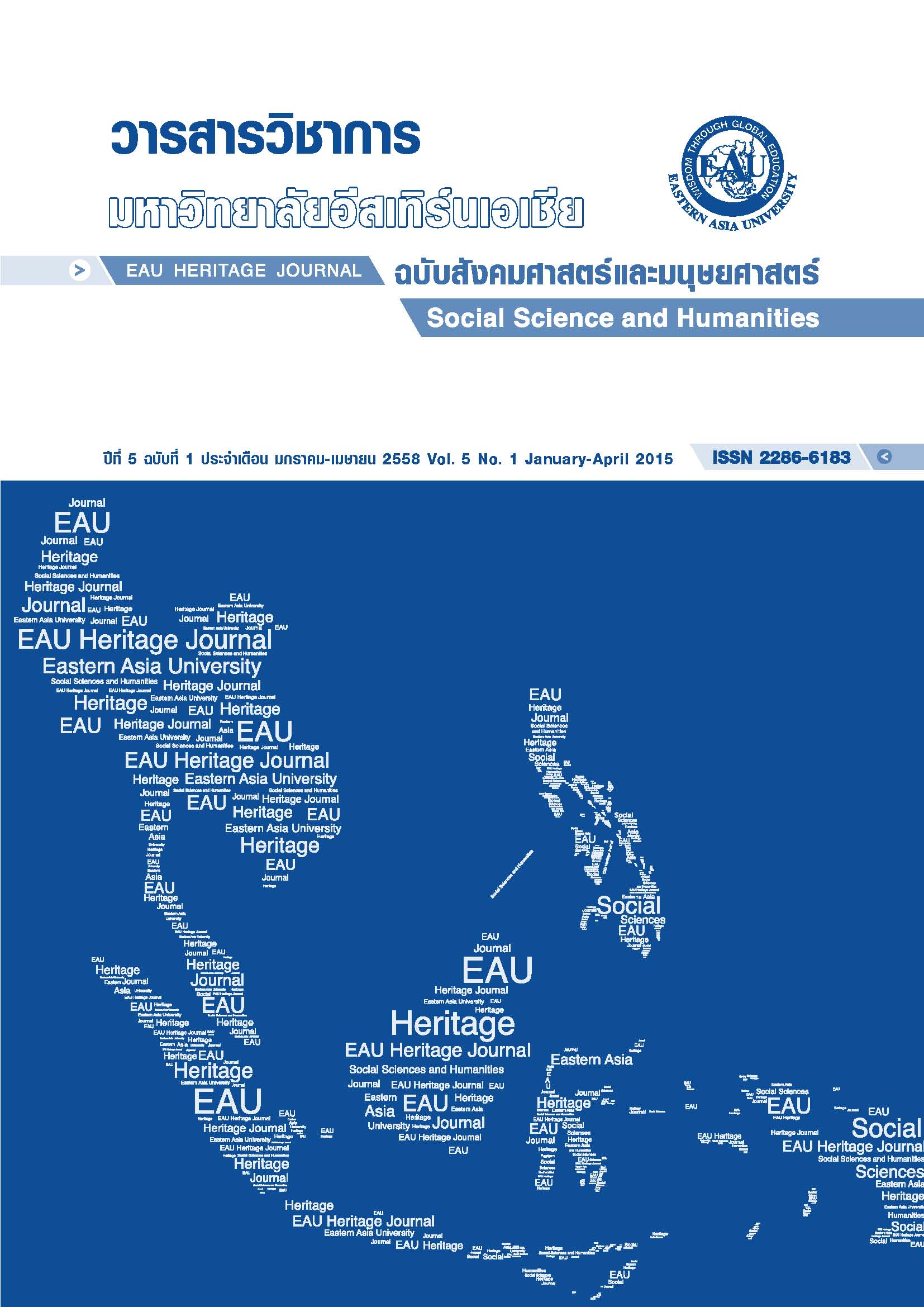การตัดสินใจเพื่อการจัดการลูกค้าร้องเรียนสำหรับนักการตลาดยุคดิจิตัล
Keywords:
ลูกค้าร้องเรียน, การจัดการ, ความพึงพอใจ, การตัดสินใจAbstract
การตัดสินใจเพื่อการจัดการลูกค้าร้องเรียนนั้นมีขั้นตอนที่สำคัญที่สุดคือการรวบรวมข้อมูลที่ใช้ประกอบการตัดสินใจ โดยเฉพาะเหตุการณ์ที่เกิดขึ้น และเป้าหมายการร้องเรียนของลูกค้าที่สามารถแบ่งได้ 16 แบบ ตามความคาดหวังที่ต้องการจากการร้องเรียนและพฤติกรรมการแสดงออกของลูกค้า ลูกค้าทั้ง 16 แบบนี้เป็นลูกค้าที่สร้างมูลค่าทางธุรกิจให้แก่ธุรกิจ และลูกค้าที่ไม่สร้างมูลค่าแก่ธุรกิจ เมื่อธุรกิจสามารถจำแนกลูกค้าได้แล้ว ต้องสรุปประเด็นของปัญหาให้ชัดเจนอย่างไม่ลำเอียง เพื่อสร้างทางเลือกในการตัดสินใจ ทำการประเมินทางเลือกในการตัดสินใจจัดการแต่ละทางเลือก จากนั้นจึงทำการตัดสินใจขั้นสุดท้ายโดยเลือกทางเลือกที่ดีที่สุด ในยุคดิจิตัลธุรกิจต้องมีการคำนึงถึงประเด็นของกระแสทางสังคมออนไลน์ การควบคุมสื่อออนไลน์ และการสร้างช่องทางการร้องเรียนของลูกค้าด้วย
References
ชัยสมพล ชาวประเสริฐ. (2549). รับมืออย่างไรเมื่อลูกค้าโกรธ.กรุงเทพฯ: ซีเอ็ดยูเคชั่น.
Arnould, E. J. (2004). Consumers (2nd ed.). USA: McGraw-Hill Companies, Inc.
Bettman, J. R. (1979) An Information Processing Theory of Consumer Choice. Reading, MA: Addison Wesley.
Day, R.L., Landon, E.L. (1977) Toward a Theory of Consumer Complaining Behavior, in Woodside, A.G., Sheth, J.N. (Editor) and Bennett, P.D. (eds.) Consumer and industrial buying behavior. New York: North-Holland, pp. 425-437.
Dunn, M., Davis, S., (2004), Creating the Brand-driven Business: It’s the CEO Who Must Lead the Way. Handbook of Business Strategy, pp 241-245
Ford, D., Håkansson, H., Gadde, L.E., Snehota, I. (2003).Managing Business Relationships. (second edition). Chichester: John Wiley & Sons.
Gerrit, A., Van Raaij, F.W. (1998).Consumer Behavior, a European Perspective. Chichester, Wiley
Harvard Business Essentials. (2006). Decision Making: 5 Steps to Better Results. Harvard Business School Publishing India Pvt. Limited.
Heider, F. (1958) The Psychology of Interpersonal Relations. New York: Wiley, 322 p.
Mårtenson, R., (2008). Marknadskommunikation. Kunden.Varumärket. Lönsamheten., Test edition HGU, Studentlitteratur, Sweden
Spengler, C. and Müller, J. (2008). Marktkommunikationim Wandel: Wlecher Marken Touchpoint zählt?, Community Marketing, Schäffer-PoeschelVerlag, Stuttgart, Germany, pp. 217-233
Bettman, J. R., Luce, M. F., and Payne, J. W. (1998). Constructive consumer choice processes,
Journal of Consumer Research, 25, 187–217.
Buttle, F., and Burton, J. (2002). Does service failure influence customer loyalty? .Journal of Consumer Behavior, 1(3), 217–227
Firat, F. A., Venkatesh, A. (1993). Postmodernity: The Age of Marketing. International
Journal of Research in Marketing, 10(3), 227-249.
Mann H, Garcia-Rada X, Houser D, Ariely D (2014). Everybody Else Is Doing It: Exploring Social Transmission of Lying Behavior. PLoS ONE 9(10): e109591.
doi:10.1371/journal.pone.0109591
Reichheld, F. F., Sasser W.E. (1990). Zero Defections: Quality Comes to Services. Harvard Business Review, 68 (September/October), 105-11.
Singh, J. (1988). Consumer complaint intentions and behavior: definitional and taxonomical issues. Journal of marketing, 52 (January), 93-107.
Singh, J. (1991). Industry Characteristics and Consumer Dissatisfaction. The Journal of Consumer Affairs, 25 (1), 19-56.
Spengler, C., Wirth, W., (2009). Maximising the Impact of Marketing and Sales Activities, Io New Management, (3), 1-5




